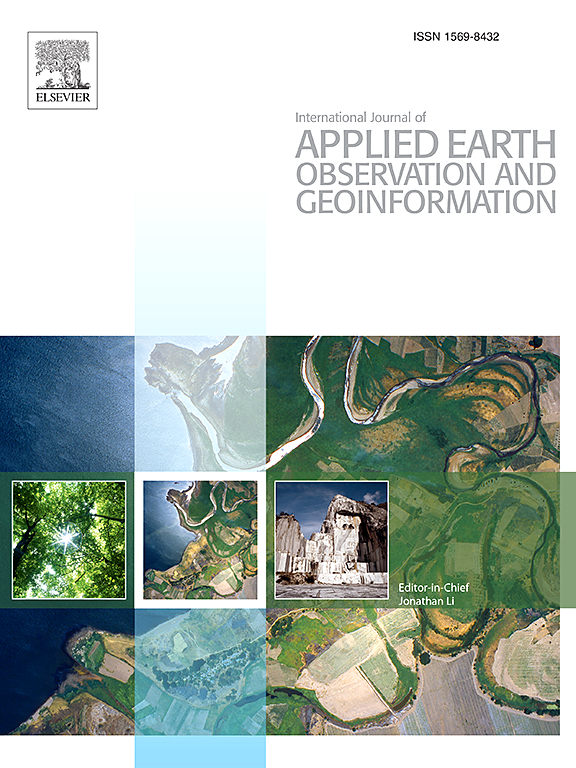无人机图像采集和处理的方法用于极浅水制图
IF 8.6
Q1 REMOTE SENSING
International journal of applied earth observation and geoinformation : ITC journal
Pub Date : 2025-06-04
DOI:10.1016/j.jag.2025.104604
引用次数: 0
摘要
作为各种动植物的栖息地,浅水区需要得到保护和持续监测。这些环境受到潮汐等局部现象和全球变暖等全球现象的影响。需要有效的测量技术来优化数据收集和处理的成本和时间。同样重要的是确保数据处理达到尽可能高的精度,特别是受折射影响的深度测量。本文的目的是根据测量仪器的可用性和编程技能,提出几种数据处理的方法,每种方法都提供不同程度的准确性。在这项研究中,RGB图像收集自波兰一个湖泊上空的无人机,以及来自单波束回声测深仪的参考数据和浅水剖面的GNSS测量数据。提出了几种处理路径,包括太阳闪烁掩蔽、摄影测量处理、折射校正,以及三种输出模型的创建:点云、DEM和正射影。考虑到每种方法的优点和局限性,讨论了预期的准确性,并给出了最佳方法的建议。本文章由计算机程序翻译,如有差异,请以英文原文为准。
The approach to UAV image acquisition and processing for very shallow water mapping
Shallow water areas need to be protected and continuously monitored as a habitat for diverse flora and fauna. These environments are subject to changes caused by both local phenomena, such as tides, and global phenomena, such as global warming. Efficient measurement techniques are needed to optimize the cost and time of data collection and processing. Equally important is to ensure that data processing achieves the highest possible accuracy, especially for depth measurements affected by refraction. The aim of this paper is to present several approaches to data processing, based on the availability of measurement instruments and programming skills, each offering different levels of accuracy. In this study, RGB images were collected from an unmanned aerial vehicle over a Polish lake, together with reference data from a single-beam echo-sounder and GNSS measurements of shallow water profiles. Several processing paths were proposed, including sun glint masking, photogrammetric processing, refraction correction, and the creation of three output models: a point cloud, DEM, and orthomosaic. The expected accuracies are discussed, along with recommendations for the best method, taking into account the strengths and limitations of each approach.
求助全文
通过发布文献求助,成功后即可免费获取论文全文。
去求助
来源期刊

International journal of applied earth observation and geoinformation : ITC journal
Global and Planetary Change, Management, Monitoring, Policy and Law, Earth-Surface Processes, Computers in Earth Sciences
CiteScore
12.00
自引率
0.00%
发文量
0
审稿时长
77 days
期刊介绍:
The International Journal of Applied Earth Observation and Geoinformation publishes original papers that utilize earth observation data for natural resource and environmental inventory and management. These data primarily originate from remote sensing platforms, including satellites and aircraft, supplemented by surface and subsurface measurements. Addressing natural resources such as forests, agricultural land, soils, and water, as well as environmental concerns like biodiversity, land degradation, and hazards, the journal explores conceptual and data-driven approaches. It covers geoinformation themes like capturing, databasing, visualization, interpretation, data quality, and spatial uncertainty.
 求助内容:
求助内容: 应助结果提醒方式:
应助结果提醒方式:


